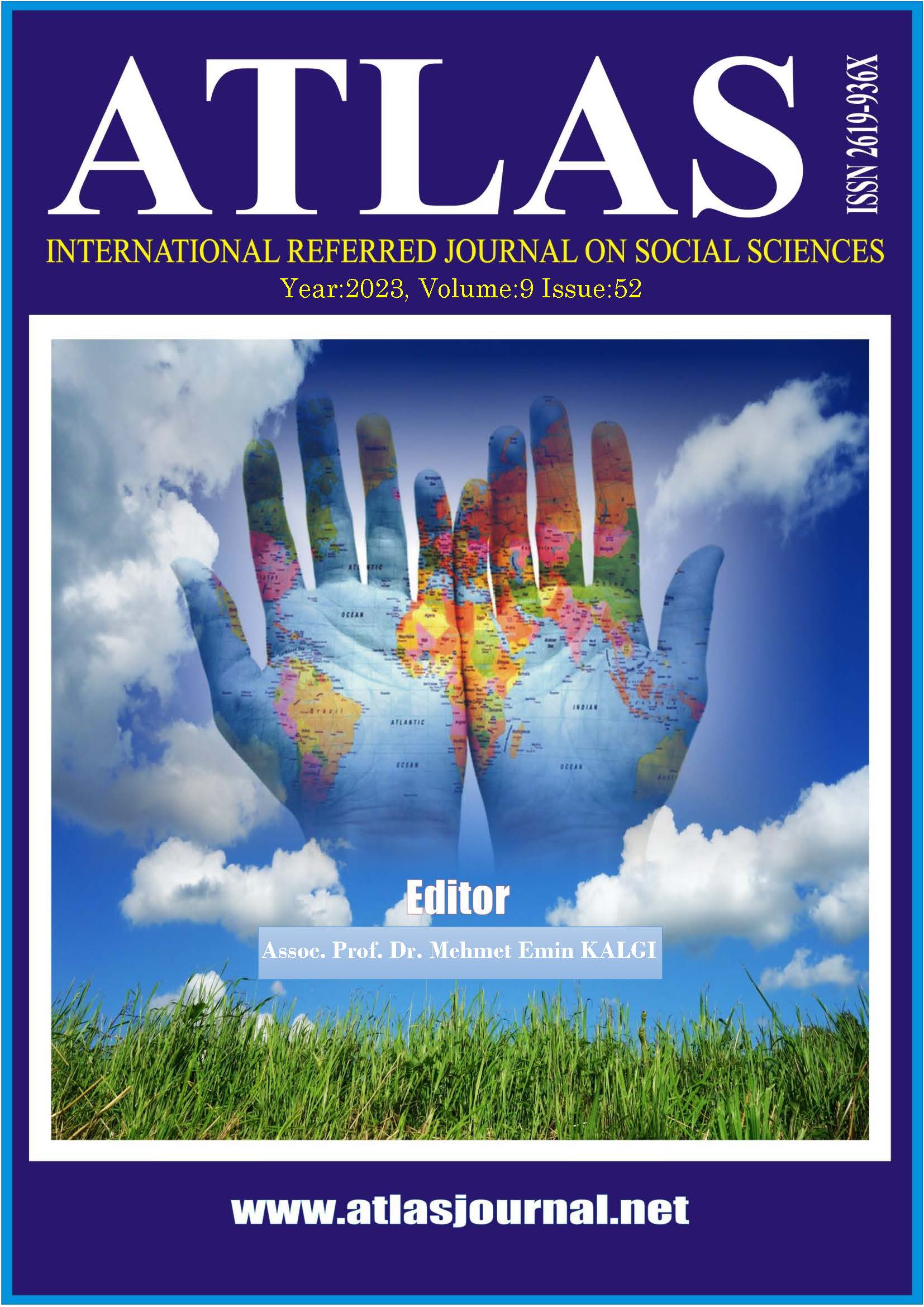Use of Public Service Advertisements In Teaching Turkish as a Foreign Language
DOI:
https://doi.org/10.5281/zenodo.10410638Keywords:
Public Service Advertisements, Technology Supported Language Teaching, Teaching Turkish To ForeignersAbstract
from the conveniences of our age, preventing time wasting in the lesson, reducing stress, and making students active in the lesson. It has been determined by various findings how effective such applications are when viewed from the perspective of both the teacher and the student. In particular, technological materials are useful to save the classroom environment from passivity and accustom the students to the lesson. There are many scientific studies on the contributions of short videos, films, and TV series to language teaching and learning processes. The use of technology in the field of Teaching Turkish as a Foreign Language is limited. Public service advertisements have a structure that can be used in Teaching Turkish as a Foreign Language in terms of correct and proper use of Turkish. In this context, when it is used in Teaching Turkish as a Foreign Language course, it will contribute to the learners ability to using Turkish better. In this study, it is aimed to improve speaking and writing skills by various activities by using public service ads, named "Quit Smoking", "Hekimoğlu Coronavirus", "Sharing Your Wifi Password”, “Traffic is Life”, “Importance of Sign Language" which are frequently used on television in Turkey, B1 level activities were eveloped and it was aimed to improve the language skills of students through public service announcements, which are a technological product. Five in-class activities are designed for each public spot in order for students to improve themselves in the areas of language expression, writing, and speaking skills, by using these public spots that give valuable messages to Turkish people. It is expected that the activities suggested in the study will improve the writing and speaking skills of the learners, and this development will affect their life social life. As a result, it has been pointed out that these classroom activities used provide an effective teaching in accordance with the level of those who want to learn the richness of Turkish as a foreign language, and it is especially beneficial for the student in terms of addressing language skill areas. The fact that no study has been carried out in the field using public spots shows the importance of the study. It is thought that these aspects of the study will set an example for the technology-supported language teaching studies in the field of Teaching Turkish as a Foreign Language to be made from now on.
References
Demirel, Ö. (2012). Yabancı dil öğretimi: dil pasaportu, dil biyografisi, dil dosyası. Ankara: Pegem Akademi.
Harmandar, M. (2021). Yabancılara Türkçe Öğretiminde Dil-Kültür Bağlamında Türk Dizilerinin Değerlendirilmesi: “Ezel” Dizisi Örneği. Karamanoğlu Mehmetbey Uluslararası Eğitim Araştırmaları Dergisi, 3(1), 22-27.
İşcan, A. (2011). Yabancı Dil Olarak Türkçe Öğretiminde Filmlerin Yeri Ve Önemi.
İşcan, A. ve Aktürk, Y.(2014). Televizyon Dizilerinin Türkçenin Yabancı Dil Olarak Öğretiminde Kullanımı: Seksenler Dizisi Örneği, International Journal of Language Academy. Volume 2/4 Kış s: 234/246
Liao, X. (2000). Communicative language teaching: Approach, design and procedure. US: ERIC. Lightbown, P., & Spada, N. (1999). How languages are learned. OUP
Odabaşı, Ferhan ve Aysel Gürcan Namlu. (1998). "Türkçe Öğretiminde Ortamlar." Türkçe Öğretimi. Editör: Seyhun Topbaş. Eskişehir: Açıköğretim Fakültesi Yayınları.
Özbay, Murat (2002). “Kültür Aktarımı Açısından Türkçe Öğretimi”, Türk Dili, (602): 112-120.
Özcan, M. (2007). Arapça yazma becerileri öğretiminde iletişimsel yaklaşım (Yüksek lisans tezi). https://tez.yok.gov.tr/UlusalTezMerkezi/’nden erişilmiştir (Tez No. 205357).
Özcan, M. (2015). Yabancı dil olarak Arapça konuşma becerisi öğretiminde iletişimsel yaklaşıma dayalı etkinliklerin kullanımı. 21. Yüzyılda Eğitim ve Toplum, 4(10), 153-164.
RTÜK (2012) Kamu Spotları Yönergesi, https://www.rtuk.gov.tr/kamu-spotlari-yonergesi/3795, (Erişim Tarihi:12.04.2022)
Sever, S. (2004). Türkçe öğretimi ve tam öğrenme (4. Baskı). Ankara: Anı Yayıncılık.
Takıl, N. B. (2014). Türkçenin yabancı dil olarak öğretiminde iletişimsel yaklaşımın yazma becerisine etkisi (Doktora tezi). https://tez.yok.gov.tr/UlusalTezMerkezi/’nden erişilmiştir (Tez No. 366357)
Ünlüler Arabacı, P. (2015). Yabancı Dil Olarak Türkçe Öğretiminde Yararlanılan Kısa Ve Uzun Metrajlı Filmlerin Kırgızistan Bağlamında Değerlendirilmesi. Manas Sosyal Araştırmalar Dergisi, 4 (2) , 83- 97.
Yaylı D. ve Bayyurt Y.(2011). Yabancılara Türkçe Öğretimi Politika Yöntem ve Beceriler. 2. Baskı Ankara: Anı Yayıncılık.
Yılmaz, F. Diril, A. (2015). Filmlerle Yabancılara Türkçe Öğretimi: Beyaz Melek Film Örneği. Akademik Sosyal Araştırmalar Dergisi, Yıl: 3, Sayı: 10, Mart 2015, s. 223-240
Yılmaz, F. ve Şenden, E, Y. (2014). Türkçenin Yabancı Dil Olarak Öğretiminde Kalıp Sözlerin Etkinliklerle Öğretimi. Asya Öğretim Dergisi, 2(1(ÖZEL)), 53-63.
Downloads
Published
How to Cite
Issue
Section
License
Copyright (c) 2023 Atlas Journal

This work is licensed under a Creative Commons Attribution-NonCommercial 4.0 International License.


